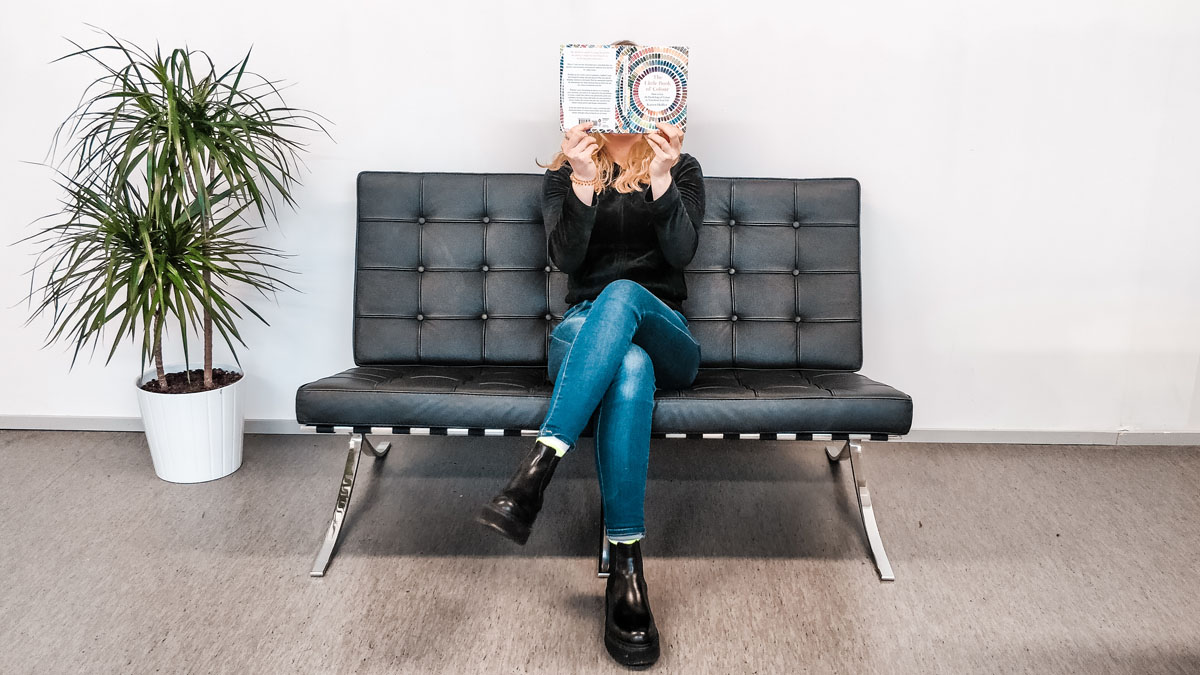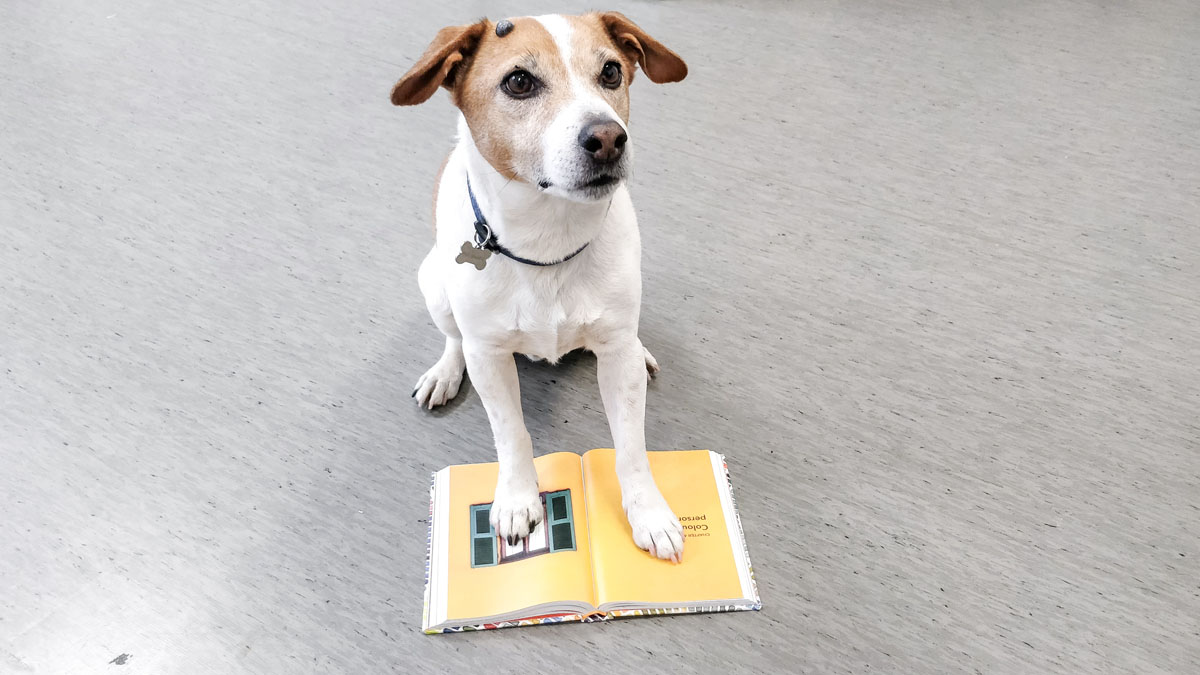A good start for a New Decade is an interview with Karen Haller, an international author, speaker and teacher in the field of Applied Color Psychology. Having studied color for over 20 years, she understands how color affects and influences us yet how businesses and designers can use it to influence behavior.
Per Boicel from Omuus interviewed Karen about her new book about Colour that was published in 2019, covering the aspects why color psychology is such an important subject nowadays and what is the future for color psychology.
Karen, your new book ‘The Little Book of Colour’ is doing really well – Congratulations!
Thank you Per, I’m thrilled how well the book has been received in the UK – The Sunday Times named it as one of their Top 10 Design books for 2019.
The book is being translated currently into a further 12 languages so interest in the book is spreading world-wide and it shows that colour is making a comeback which is great news seeing how we have been living in a colour drought for the past decade or so.
Colour psychology is relatively unknown in many countries, could you tell us a bit what your new book is about?
The Little Book of Colour is about how to use the psychology of colour to transform our life. We are surrounded by colour and it influences everything we do. When we connect to colour, we connect to what we feel, and when we connect to what we feel we connect to who we are. Our fascination with colour has been around since the dawn of time with philosophers, physicians, scientists, psychiatrists studying this phenomenon – such as Empedocles – c.490-c.430 BC, Aristotle 384-322 BC, Newton 1642-1727, Goethe 1749-1832, Jung 1875-1961, Bauhaus 1919-33, Wright 1939- and many more. This book explains the evolution and theories of the science of colour and my studies under the tutelage of the well-known expert in the field, Angela Wright and how the reader can then apply this to their everyday life.
What was the real gamechanger in your life that motivated you to specialise in colour psychology and work with colour science?
The epiphany moment that I described in my book was when I was studying Millinery in my twenties back in my native country Australia. I was sewing chocolate brown feathers on a teal blue hat and seeing the impact of the colours together stopped me in my tracks. I found myself saying out loud “Oh my God it’s colour”. I had no idea what it meant; I just knew I had to find out more. I was completed obsessed with why did I liked one colour and not another one? Why does some colour make us happy and some anxious? Why did I want to wear a colour one day and not the next? Why does the colour in one café want me to come in and sit for a coffee and another not?
So, I studied everything I could but there were so many questions left unanswered. It wasn’t until I was in the UK and I took a course run by the colour psychologist Angela Wright. Angela could answer all my questions with deep understanding of why and how colour affect our mind, emotions and influences our behaviours. This is when I had my eureka moment – what I had been searching for was called Applied Colour Psychology. I stayed with Angela for a year and I think I drove her nuts by asking her so many questions until it all came together which has led me to doing the work I do today.
Why do you think a book about colour psychology is so important today?
This book is putting the knowledge of how to use colour in a positive way in the hands of everyone. It shows how you can use colour as a form of self-expression no matter who you are to express the authentic you by combining your own intuition with logic and rationale. This book takes the fear out of making the wrong colour choices or getting it wrong. It shows how you can be in control of your own colour choices without the need to slavishly follow trend or copy others.
Per: The famous saxophone player Charlie Parker learned at very young age after failing at his first public performance, that is something called Key Signature – the set notes are played in order to create a piece of music. Is this the same with colours? Is that why some colours clash and feel completely out of tune, because they are not in the right key?
Yes, that’s right, intuition can just take you up to a certain point. It’s not able to answer why, just what and then it’s up to the client or student to blindly trust the one with the intuition. To know the logic and innate relationship between colours is crucial if we aspire to have a much deeper understanding of the science of colour to create consistent, repeatable results. Using a colour out of harmony is like blaring a saxophone out of key, it’s just painful to listen to. Using colour out of harmony is just as painful for our senses and creates a dis-comfort and a dis-ease which is why I would feel comfortable in one café and not another.
In what way is your new book different from others?
This book is for the everyday person explaining in a very conversational way what colour actually is and why it has the impact it does and influences us how we think, feel and behave in so many different ways. The book also shows how you can bring colour into your everyday life from the clothes you wear and relationships, the colours in your home to your workplace. The book guides you in how you can connect back to your authentic self so that you can express who you really are no matter what the occasion or situation.
In what areas do you see colour is used without the structural knowledge and ‘just’ by intuition?
I find working with different companies that often the colours are arbitrary chosen for products and branding without there being any logic or rationale to back up their choices. Often colour choices are simply based on copying what everyone else is doing in the market, going against the norm or following the latest trend without fully understanding the impact the colours are having on their brand or the message it’s conveying to their ideal customers.
What are the greatest challenges for colour psychology?
Initially I was looking to write a book about Applied Colour Psychology for the designer industry however the response was “We use our intuition”. I found it interesting that design professionals are willingly to attend courses in lighting, materials etc but not when it came to building on their existing colour knowledge which typically was the colour wheel. From my many conversations it seemed there is a belief that “colour is something we already know”. Intuition is definitely one part. Having the science, logic and rationale is the other. So, I decided to change the audience I was writing for – if the designers didn’t want the book then I’ll share the knowledge with the everyday person so that they could use it.
So even though I wrote the book for the everyday person, I’ve been really surprised that the biggest uptake of the book has been the design industry. The response has been really positive with many saying it’s clarified many concepts for them, and they are now able to add the logic and rationale behind their colour decisions when speaking to their clients.
The former president of the British Institute of Interior Design (BIID), Susie Rumbold said, “This book is a fascinating introduction to the science of colour psychology and how to apply it. The power of colour to influence human behaviour is only just beginning to be fully understood and this book provides a wealth of information on how to improve lives by changing environments. A great tool for design professionals and interested amateurs as well.”
Where do you see (or want to see) colour psychology move in the next 10 years?
I want to create a colour revolution, a world-wide paradigm shift. To show that colours isn’t something we should be scared of or worried we are getting it wrong or feel we the need to follow trends or fashion. Instead how we can all use colour in a positive, conscious way to authentically express who we are and create spaces that we love, support and nurture us. That’s why I wrote this book.
Thank you, Karen, for your time and work. As partners of Angela Wright’s teaching, we at Omuus also want to promote the same understanding of why and how colour affect our mind, emotions and influences our behaviours.
Download FREE first chapter
If you would like to download the first chapter of The Little Book of Colour for free then head over to The Little Book of Colour Free Chapter.
Buy The Little Book of Colour
If you would like to buy The Little Book of Colour – How to Use the Psychology of Colour to Transform your life then head over to The Little Book of Colour website.



